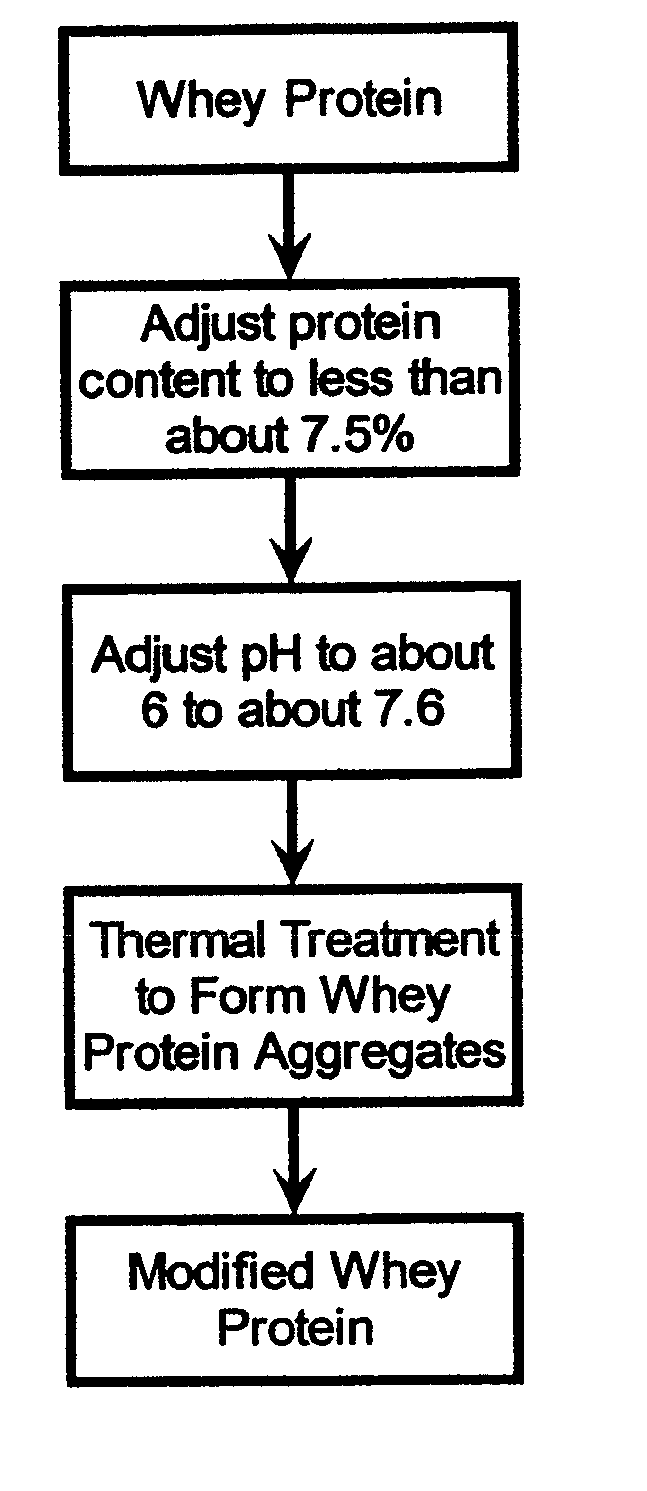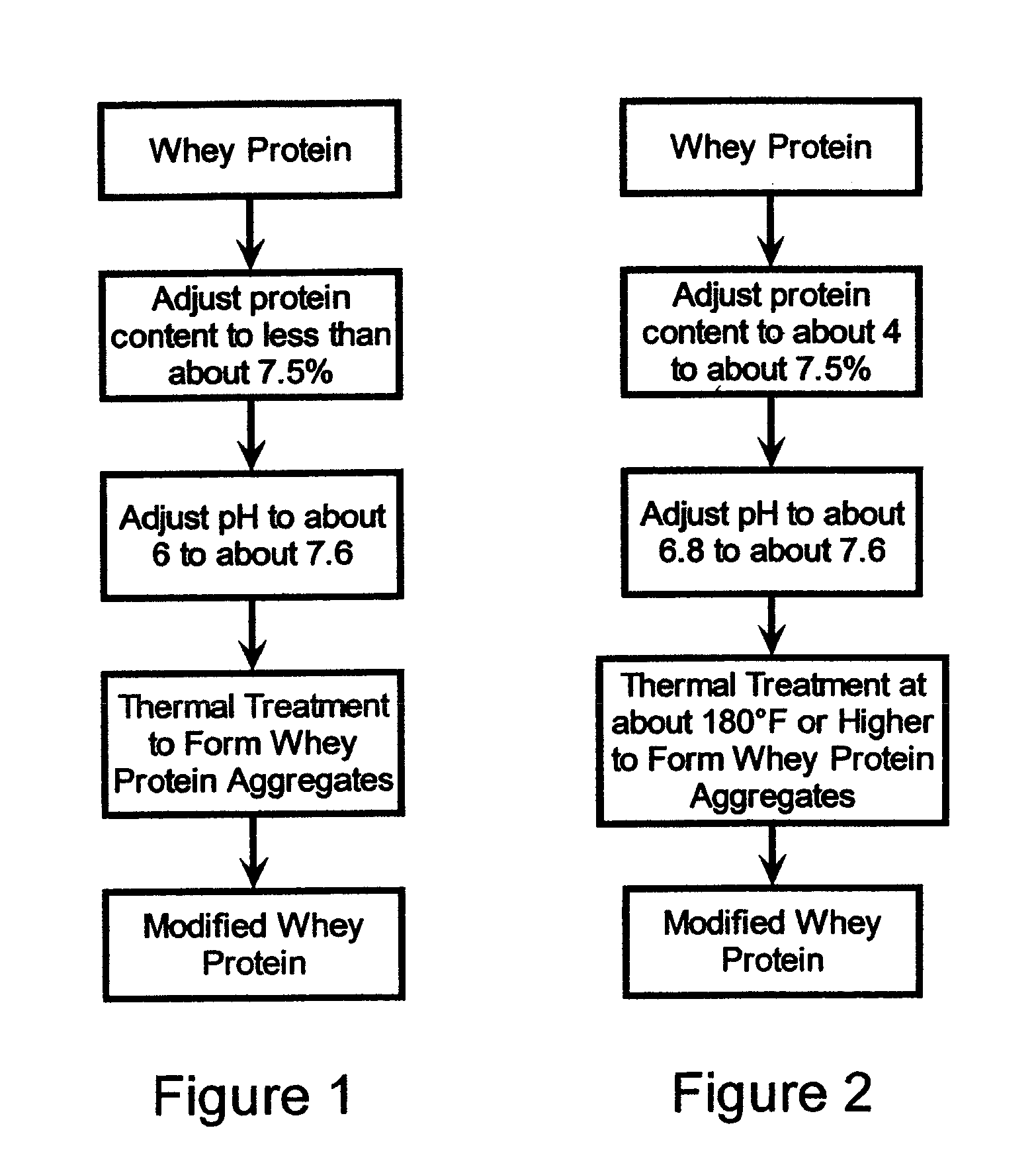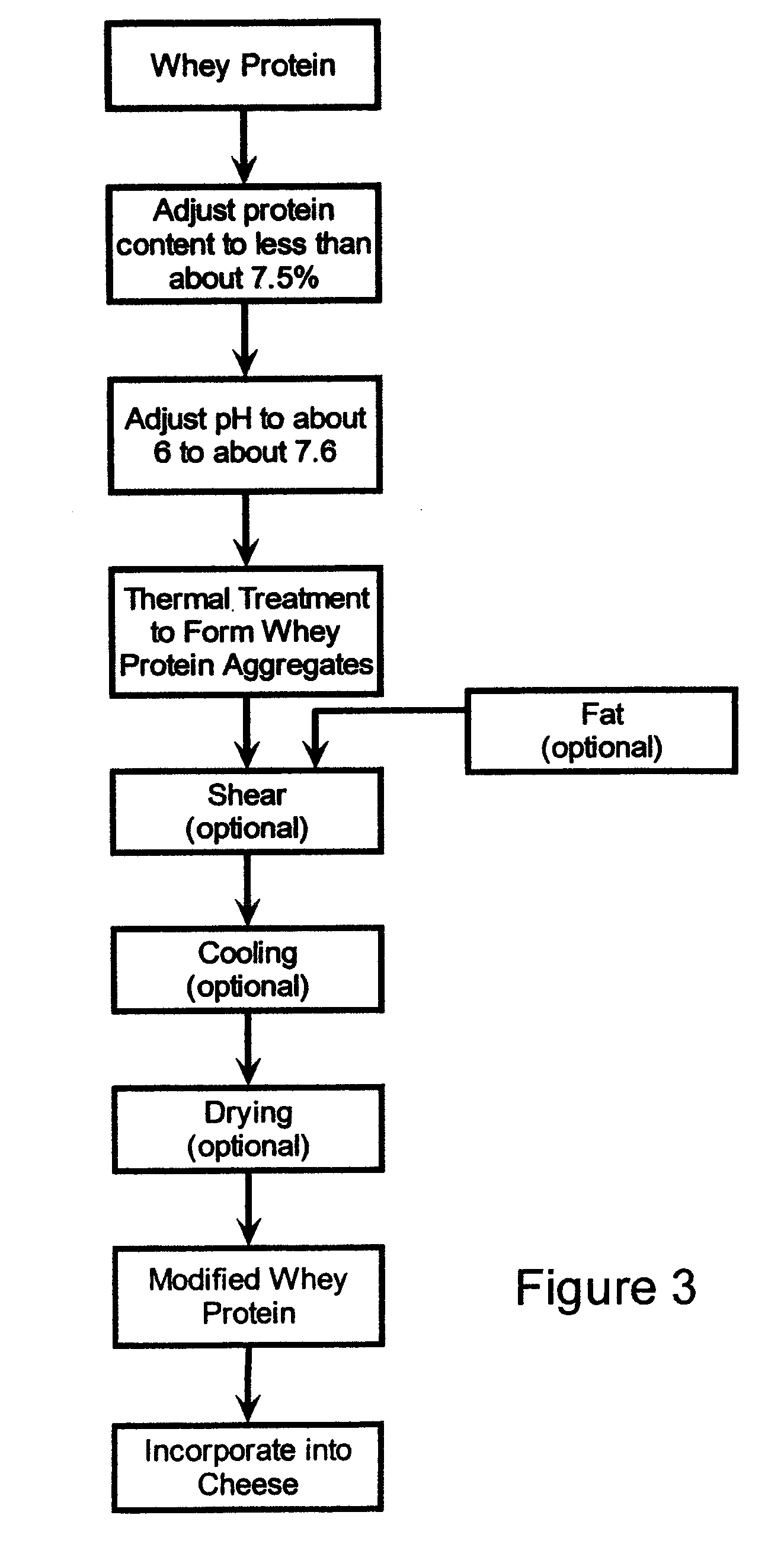Modified Whey Protein For Low Casein Processed Cheese
a technology of processed cheese and whey protein, which is applied in the field of modifying whey protein, can solve the problems of difficult to achieve the nutritional benefits of a processed cheese with lower levels of casein protein and higher levels of moisture, and the difficulty of maintaining the nutritional benefits of a processed cheese with lower high levels of moisture, etc., and achieves reduced levels of casein protein, firmness and smooth texture, and increased moisture.
- Summary
- Abstract
- Description
- Claims
- Application Information
AI Technical Summary
Benefits of technology
Problems solved by technology
Method used
Image
Examples
example 1
[0036] In this example, whey protein at various protein levels and pH of 6.8 were modified according to the methods described previously to form a modified whey protein powder. The modified whey protein powders were then incorporated into a processed cheese having a standardized formula accordingly to Table 1 below. For comparison, a non-modified whey was also included in a processed cheese having the same standardized formula. The firmness of each processed cheese was tested using the vane method described above and a panel of taste testers evaluated the texture. The results of this experiment are shown in Table 2 below.
TABLE 1Standardized formula of Process CheeseIngredientAmount, %Whey protein6Casein protein9Lactose10Milk fat18Emulsifying Salt2.5Salt1.8Water50
[0037] Comparative Modified Whey A: A liquid WPC having about 34 percent whey protein was concentrated to about 47.7 percent solids prior to the modification process. The concentrated WPC was then diluted to about 39.3 per...
example 2
[0050] In this example, whey protein at various protein concentrations were also modified according to the methods described previously, but at a pH 7.6. The modified whey protein powders were then incorporated into a processed cheese having a standardized formula accordingly to Table 1 above in Example 1. The firmness of each processed cheese was also tested using the vane method described above. The results are illustrated in Table 3 below.
[0051] Comparative Modified Whey D: A liquid WPC with 50 percent protein was first concentrated to 39.5 percent solids (i.e., about 19.5 percent protein) and then heated to 100° F. where the pH was adjusted from 6.3 to 7.6 using 5N NaOH. The liquid WPC at pH 7.6 was then heated to 180° F. by steam injection and held in a holding tube for 6 min. Afterwards, the WPC pumped into a Breddo Liquifier to disperse any large whey protein curds, sheared in a Silverson high shear pump, and spray dried. Due to dilution from direct steam injection, the liqu...
PUM
 Login to View More
Login to View More Abstract
Description
Claims
Application Information
 Login to View More
Login to View More - R&D
- Intellectual Property
- Life Sciences
- Materials
- Tech Scout
- Unparalleled Data Quality
- Higher Quality Content
- 60% Fewer Hallucinations
Browse by: Latest US Patents, China's latest patents, Technical Efficacy Thesaurus, Application Domain, Technology Topic, Popular Technical Reports.
© 2025 PatSnap. All rights reserved.Legal|Privacy policy|Modern Slavery Act Transparency Statement|Sitemap|About US| Contact US: help@patsnap.com



